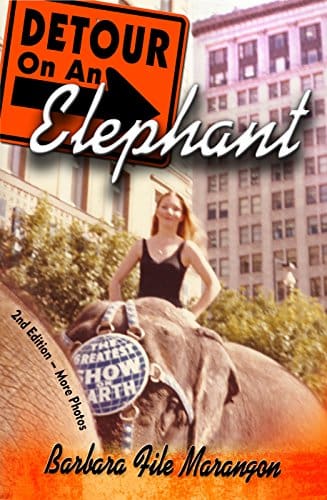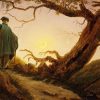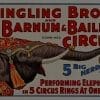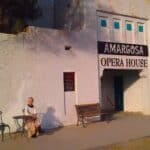Through the Eyes of a Dancer: The Joy of Learning Valuable Lessons
I cherish the memories of the theaters, arenas, and performance spaces where I performed as a dancer or presented choreography. Most of these structures still exist today, but others are just a memory found in history books. While dancing in the Teatro Goldoni in Venice, Italy, inaugurated in 1622, the old opera house reminded me of an aging diva who enchants us with her past (even though the theaters in Italy are considered masculine). Unfortunately, the new state-of-the-art buildings lack this charisma. But from New York’s Metropolitan Opera to the Cow Palace in San Francisco (used for cattle auctions when there were no performances) every venue taught me valuable lessons.
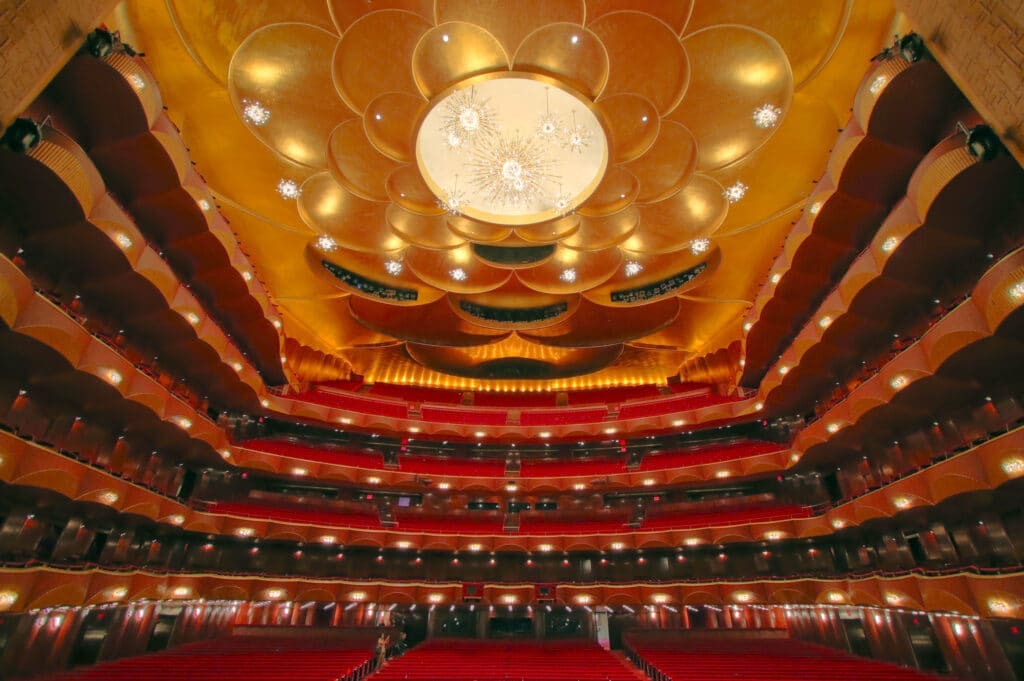
The first time I performed at the Metropolitan Opera House in New York I was a young ballet student—not yet engaged with a company. The Royal Ballet came to town and I was hired to dance in The Sleeping Beauty on the same stage with the extraordinary dance partnership of Margot Fonteyn and Rudolf Nureyev as history was being made.
“A life lesson came from this—things can go wrong anytime, anywhere, and to anyone. Our lives can change forever in a second. No one is spared from this humbling reality.
A year later, hired again as an extra dancer, I remember standing on the dark stage of the Metropolitan Opera as the curtain opened on Stuttgart Ballet’s Romeo and Juliet. I watched the twenty-one chandeliers with almost fifty thousand crystals in the form of stars in a constellation make their way to the ceiling—a magical moment. Though it was totally dark in the theater, I could sense the heartbeat and pulse of hundreds of spectators.
However, two hours later this dream-like place experienced a scenery mishap—a rope broke while lowering Juliet into her tomb. She miraculously came back to life to stop her fall and saved herself from a deadly accident. A life lesson came from this—things can go wrong anytime, anywhere, and to anyone. Our lives can change forever in a second. No one is spared from this humbling reality.
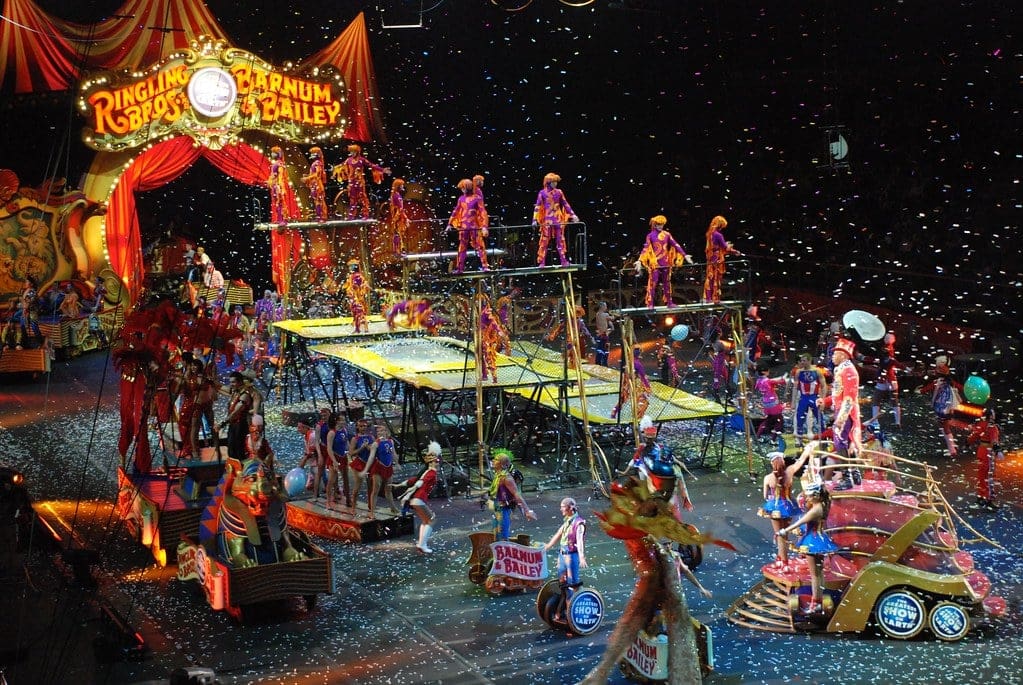
In the spring of 1978, while performing with Ringling Bros. Circus, Madison Square Garden became our home for a couple of months, though we had to share it with other events—concerts, fights, and sports. I remember the organizers decided that they could jam in a Canadian hockey game and the circus both in one day.
“the expression the show must go on isn’t always valid, and prudently letting go of something for now doesn’t mean giving up on it forever.
The ice rink was assembled on the arena floor for the hockey game in the evening, and the rubber track placed over the ice for the circus. But as we opened the show that morning we discovered more than we bargained for—the cold rubber became as slippery as the ice under it. As dancers we tried desperately to keep our footing, but we were dancing on ice! The elephants and horses couldn’t keep their balance either, so the decision was made—the show didn’t go on that day. The experience taught me that the expression the show must go on isn’t always valid, and prudently letting go of something for now doesn’t mean giving up on it forever.
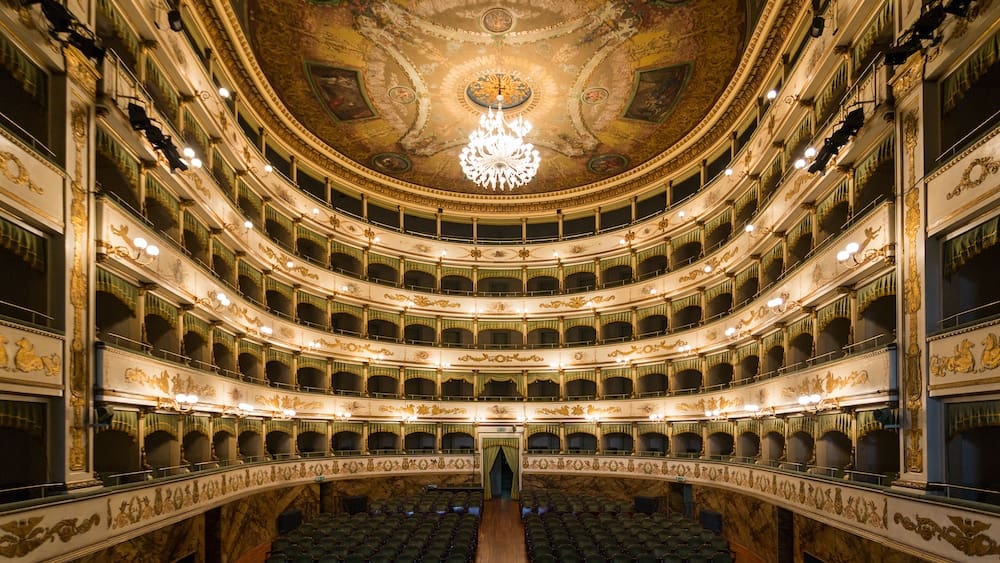
Fast forward to the summer of 2005, I brought my students to dance at the beautiful Teatro Bonci in Cesena, Italy. Dancers came from all over the world so they could say later—I danced on the same stage as Rudolph Nureyev in Italy. But one thing they didn’t anticipate was the heat and humidity inside the theater—there was no air conditioning. This attracted armies of mosquitoes that attacked everyone. One thing performing in Italy taught me—bring mosquito repellent if you dance there in the summer!
“Another important lesson I learned in Italian theaters is to always have a plan B for the stage and life.
Another important lesson I learned in Italian theaters is to always have a plan B for the stage and life. Long before the problem becomes apparent ask the question what if…? How do I dance on a small stage when a grand piano occupies half the space? Or what if I lose my job? Always prepare yourself for a possible change in plans.
Thirteen years later, I took my husband to see the Oklahoma State Fair Arena where I performed with Ringling in 1978. Memories flooded back to that time. I remember the dark shadowy forms of moving elephants outside the arena as they pushed forward through the dust and tumbleweed. Inside the venue I battled flies and the heat with everyone else. The place was small—only nine thousand seats—and mainly used for the rodeo.
As I rode my elephant Peggy around the arena back then, I saw the faces of thousands of spectators, many of them were Native Americans. Their expression was one of sadness rather than curiosity or enthusiasm. It was though they could see that the tradition of the circus would come to an end one day. At that moment I thought, maybe someday performing with elephants would be a thing of the past as their way of life hunting buffaloes on the Great Plains. Thirty-eight years later this prophecy came true in 2016 when elephants were permanently retired, and the year after, Ringling Bros. Circus closed permanently…
“Angry faces told us we were not welcome at this manifestation and we were asked to leave. The venue sent me a message that day—one of division and hate.
Now I stood in the arena and said goodbye, because it would soon be demolished. The building overflowed with people gathered for a huge religious rally. I looked around for the last time. The once bright arena looked dark with age. It appeared as though it had never been painted since the colorful days of the circus. The lights emanating from sequins and rhinestones were extinguished forever. Animals and performers would never again bring joy to an audience. Angry faces told us we were not welcome at this manifestation and that we should leave. The venue sent me a message that day—one of division and hate.
Memories don’t follow chronological order but a thought can trigger them. The Stadttheater of Klagenfurt Austria became my home in 1974 when I signed a contract with their ballet company. Full-length operas, ballets, and dramatic plays performed by their acting company, rotated every evening. These were often accompanied by the theater’s symphony orchestra. Once a year all four entities collaborated in a musical and Can-Can was our show that year. In a town where no cinema existed, the theater fed its population entertainment for all tastes.
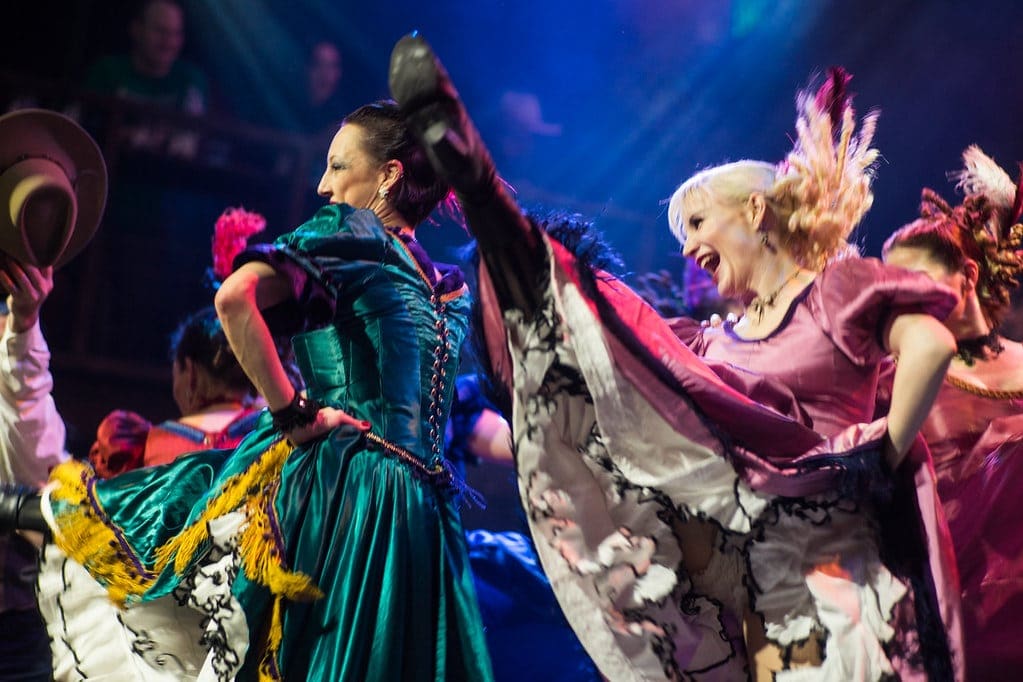
The tiny Austrian city was a hostile, cold, unfriendly place. In Klagenfurt the theater patrons received us well, but outside the same local people shunned us. However, the theater not only gave a livelihood to its dancers, singers, musicians, and actors. It was a source of life for the townspeople. The lights, magic, and excitement of the evenings at the Stadttheater overshadowed the gray snowy days. Here I learned the most important lesson of all—the performing arts bring us together. We leave hate, bigotry, and division at the door. Theaters, arenas, and entertainment venues are great temples to the muses, where everyone can worship and celebrate. So buy a ticket, relax, and enjoy the show.
Credits
Photo of Metropolitan Opera House from Wikimedia
Image of Ringling Bros Barnum Bailey Circus by Joe Shlabotnik for Flickr
Photo of Teatro Bonci from Wikimedia Commons
Photo of can-can dancers by Audrey Penven for Flickr
Learn More
New to autoethnography? Visit What Is Autoethnography? How Can I Learn More? to learn about autoethnographic writing and expressive arts. Interested in contributing? Then, view our editorial board’s What Do Editors Look for When Reviewing Evocative Autoethnographic Work?. Accordingly, check out our Submissions page. View Our Team in order to learn about our editorial board. Please see our Work with Us page to learn about volunteering at The AutoEthnographer. Visit Scholarships to learn about our annual student scholarship competition.
Barbara File Marangon loves writing fiction and non-fiction, transporting her readers to places where the past and present exist together. She records history from a different camera lens. Born in New York she trained to be a ballet dancer and performed in classical ballets, operas, musicals—and the circus. She traded her pointe shoes to perform with an elephant touring the U.S. with Ringling Bros. Circus. She wrote about it in her first memoir, Detour on an Elephant, A Year Dancing with the Greatest Show on Earth. Her work continued in Italy where she danced, taught, and choreographed ballets for almost two decades, inspiring her second memoir, Chasing Castles, Nineteen Years Living and Teaching Ballet in Italy. Barbara was awarded the Ballets Russes Fellowship at the University of Oklahoma where she taught and received her MFA in Dance. Her writing has appeared in Dance Magazine and Florida Writer’s Magazine. She lives in Florida with her husband and two dogs, and is presently writing a mystery/romance novel that takes place in Venice Italy.








